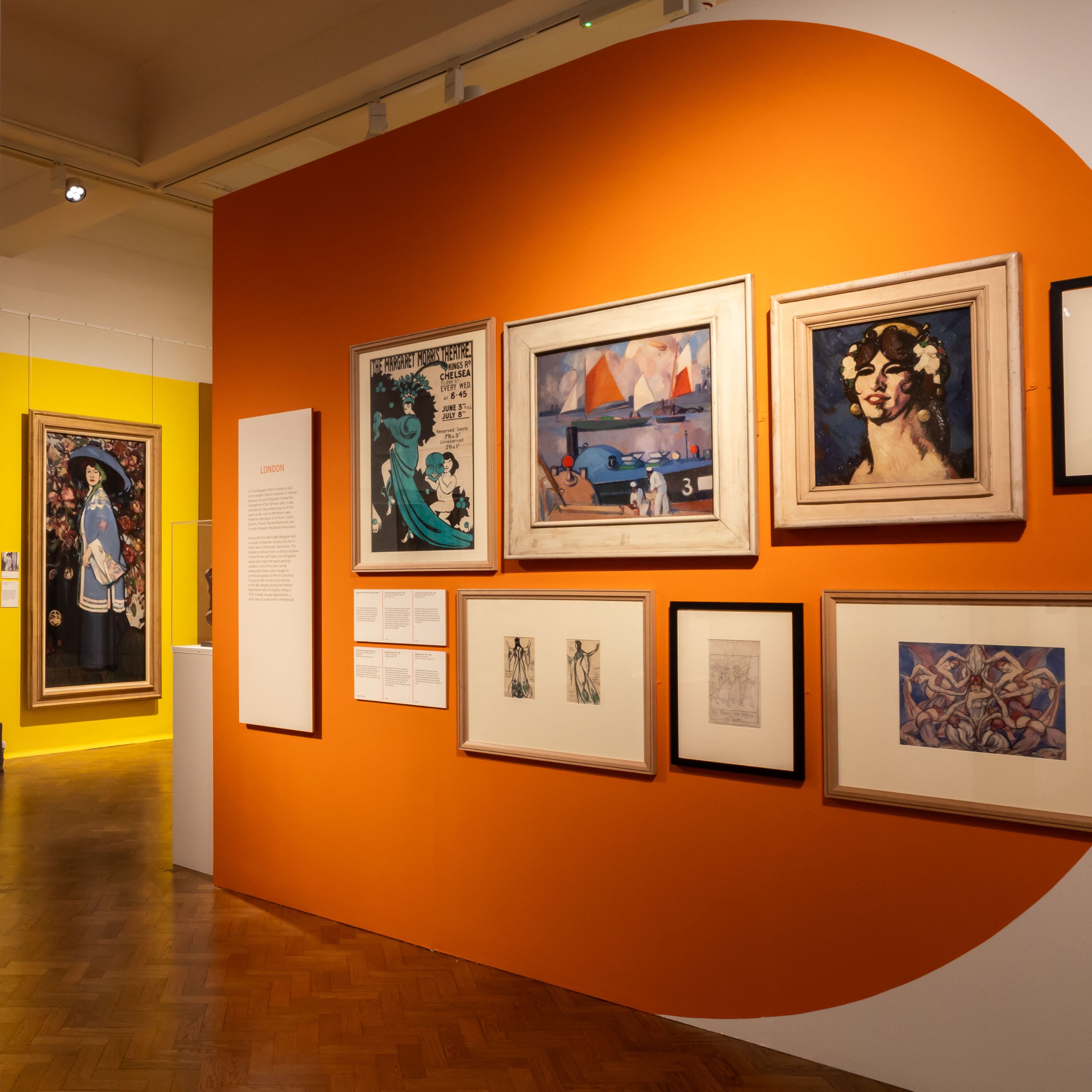Culture Perth and Kinross have announced that a new permanent display will open on the 21st of March at Perth Art Gallery. The display will celebrate the life and creative partnership of the Scottish Colourist, John Duncan Fergusson, and his partner, Margaret Morris, the pioneering dancer.
To mark the 150th birthday of JD Fergusson this year, his works will now join the permanent collection of fine and decorative art collections at Perth Art Gallery. This exciting development will enable more visitors to explore the importance of Fergusson’s work in the history of Western modern art and his role as an international artist. The newly refurbished gallery will also explore the life and works of his partner, renowned dancer, choreographer, and artist Margaret Morris.
From 21st March, the new Fergusson and Meg gallery will include some of the artist’s best-known works including ‘The Grey Hat’, ‘Le Manteau Chinois’ and ‘At My Studio Window’. It will feature important works by his lifelong partner Margaret Morris such as Cafe Crystal, as well as dance costumes, photography, and film.
The refurbished gallery showcases works spanning Fergusson’s long and productive career and will feature more than 40 paintings, drawings, and watercolours.
Collections Officer for Culture Perth and Kinross, Amy Fairley said, “We are delighted to bring the work of JD Fergusson and Margaret Morris to a wider audience in its new home at Perth Art Gallery. The new displays will demonstrate the important role which Fergusson played as an internationally recognised modern artist. And we hope that visitors will be inspired and enjoy learning about this creative couple.”
Charitable Trust Culture Perth and Kinross is the custodian of the largest collection of artwork and personal, archival material belonging to JD Fergusson.
John Duncan Fergusson was the most internationally recognised artist of the group known as The Scottish Colourists. Fergusson, who spent much of his life split between France and London, was highly influenced by the French modern movements of the early twentieth century. Margaret Morris was best known for her achievements as a pioneering dancer and choreographer, but she was also a teacher, physiotherapist, author, and talented artist.
After some time in London and France, Morris and Fergusson settled in Glasgow in 1939. The following year they set about reinvigorating the Glasgow art scene by establishing the New Art Club where artists, musicians and writers met weekly to take part in informal discussions. Related to this activity, Morris founded the Celtic Ballet. The couple continued to spend summers in Cap d’Antibes during the 1940s and 1950s. In 1960 the Celtic Ballet developed into the Scottish National Ballet and the International Association of Margaret Morris Movement now has centres across the World.
This exhibition was generously funded by the JD Fergusson Art Foundation.
Admission to the Gallery is free, but donations are welcome.
About JD Fergusson
Fergusson was born in Leith, but an interest in travel saw Fergusson move to Paris in 1907. While there, he became a member of the Parisian art circles to which artists such as Matisse and Picasso also belonged. The outbreak of the First World War forced him to return to Britain, and by 1918 he was an established member of the art scene in Chelsea, London. In 1929 he returned to Paris for a further eleven years before moving to Glasgow, where he lived until his death. Like his friend Samuel John Peploe, Fergusson’s early work was influenced by that of Whistler and the Glasgow Boys, but in France he came across Fauvism and adopted a similar style, using pure, bright colours and bold, rhythmic contours.
About Margaret Morris
Born in London in 1891, she began giving public recitals in English and French from the age of three. Around the age of seven she began ballet lessons, but soon realised the restrictive nature of classical ballet and set about developing her own form of dance. Further inspired by a meeting with Raymond Duncan, the brother of Isadora, she used the classical Greek movement that he taught her as the basis for her own training methods.
At the age of just 19, she set up her own dance school and theatre club with the help of the novelist John Galsworthy. While touring her company in Paris in 1913 she met Fergusson, with whom she would spend the rest of her life. Work commitments meant that they did spend time apart, though they exchanged frequent letters, often including sketches for set and costume designs. Fergusson taught Morris to draw and paint, interests which she encouraged in her pupils. In 1917 Morris held her first Summer School based on the then novel idea of outdoor dance classes. These were initially held in England and Wales, but during the 1920s
